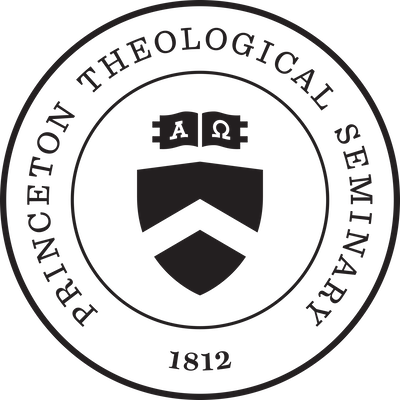Statement on Potentially Harmful Content
The Theological Commons is a freely accessible digital library of over 159,000 resources on theology and religion. Developed in partnership with the Internet Archive, it contains books, journals, audio recordings, photographs, manuscripts, and other formats dating from 975 C.E. to the present.
The Theological Commons contains some content that may be harmful or difficult to view. Libraries and archives collect materials from many cultures and time periods, to preserve and make available the historical record. As a result, some of the materials presented here may reflect outdated, biased, offensive, and possibly violent views and opinions due to pervasive systemic intolerance.
Where does this content come from?
The Theological Commons includes digitized materials from Wright Library at Princeton Theological Seminary and from 167 other libraries and archives nationally and internationally.
| Princeton Theological Seminary | 100,954 (63.4%) |
| University of Toronto | 14,164 (8.9%) |
| Library of Congress | 7,386 (4.6%) |
| University of California Libraries | 4,416 (2.8%) |
| New York Public Library | 4,276 (2.7%) |
| Beth Mardutho: The Syriac Institute | 2,068 (1.3%) |
| Columbia University Libraries | 2,028 (1.3%) |
| Earl Palmer Ministries | 1,756 (1.1%) |
| Graduate Theological Union, donated to Internet Archive | 1,554 (1.0%) |
| Brigham Young University | 1,550 (1.0%) |
| Boston Public Library | 1,350 (0.8%) |
| University of Illinois Urbana-Champaign | 1,274 (0.8%) |
| Samford University Library | 1,097 (0.7%) |
| University of Ottawa | 1,068 (0.7%) |
| Allen County Public Library Genealogy Center | 1,036 (0.7%) |
| Getty Research Institute | 1,027 (0.6%) |
| Wellesley College Library | 889 (0.6%) |
| Missio Seminary | 812 (0.5%) |
| University of North Carolina at Chapel Hill | 807 (0.5%) |
| Duke University Libraries | 780 (0.5%) |
| University of Connecticut Libraries | 780 (0.5%) |
| John Carter Brown Library | 698 (0.4%) |
| School of Theology, Boston University | 649 (0.4%) |
| Internet Archive | 537 (0.3%) |
| University of Pittsburgh Library System | 481 (0.3%) |
What harmful or offensive content may be found here?
Some items may:
- reflect racist, sexist, misogynistic/misogynoir, imperialist, or xenophobic opinions and attitudes.
- be discriminatory towards or exclude diverse views on sexuality, gender, ableism, religion, and more.
- demonstrate bias and exclusion in institutional collecting and digitization policies.
Why does the Theological Commons make potentially harmful content available?
Libraries and archives collect, preserve, and provide access to these materials as part of the historical record, which does include depictions and records of people experiencing trauma and harm. Librarians and archivists seek to balance the preservation of this history with sensitivity to how these materials are presented to and perceived by users.
How is this material described, and why are some of the terms used in the descriptions harmful?
- Librarians and archivists must select what language to use when describing materials. Some of these descriptions were written many years ago, using language that was accepted at the time.
- Librarians and archivists often use a standardized set of terms, such as the Library of Congress Subject Headings, to describe materials. Some of these terms are outdated, offensive, or insensitive.
- Librarians and archivists often re-use language provided by creators or former owners of the material. This can provide important context, but can also reflect biases and prejudices.
- Communities with less access to and privilege within libraries and archives have had less control over how they are represented and described.
- Librarians and archivists sometimes make mistakes or use poor judgement.
- Like many other libraries and archives, Wright Library at Princeton Theological Seminary is committed to assessing and updating descriptions that are harmful.
How are librarians and archivists working to address this problem and help users better understand such content?
Examples include:
- Informing users about the presence and origin of harmful content.
- Revising descriptions and standardized sets of descriptive terms, such as Library of Congress Subject Headings, supplementing description with more respectful terms, or creating new standardized terms to describe materials.
- Working directly with misrepresented and underrepresented communities to improve the ways they are represented.
- Researching the problem, listening to users, experimenting with solutions, and sharing our findings with each other.
- Evaluating existing collecting and digitization policies for exclusionary practices and institutional biases that prioritize one culture and/or group over another.
- Making an institutional commitment to DEIA (diversity, equity, inclusion, and accessibility).
How can I report harmful content?
- You can help us understand this issue and find solutions by reporting harmful content through our online contact form. Please provide the URL (web address) of the item(s) in question.
- Staff from Wright Library at Princeton Theological Seminary review all messages from the contact form. As is common practice, we will weigh potential harm against considerations such as accurate preservation of the historical record, professional best practices, and allocation of scarce resources. We will reply to your message and may request a dialog with you regarding your concerns.
- We will use all reports of harmful content to better understand the issue and educate other librarians and archivists.
This statement is based on DPLA’s Statement on Potentially Harmful Content from the Digital Public Library of America (DPLA).
